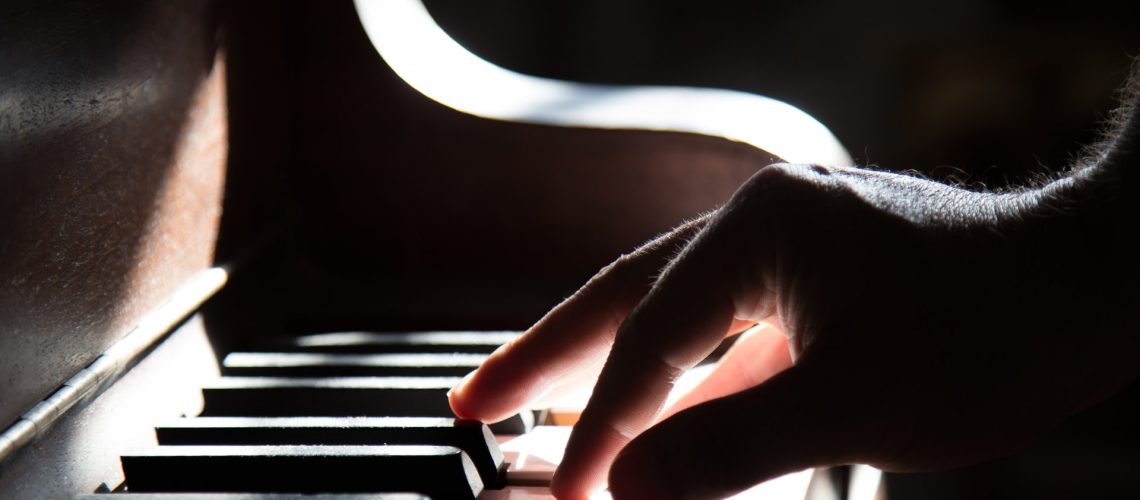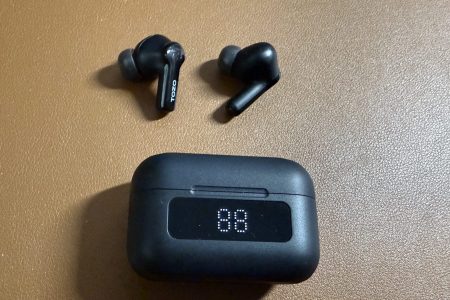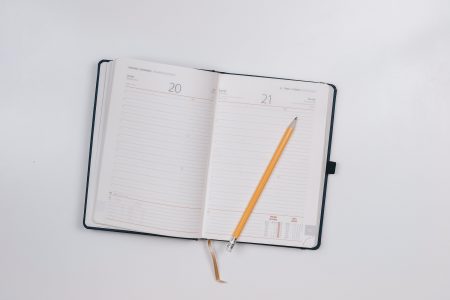This is a short review of streaming services that I have tried and used for Attention Deficit Hyperactivity Disorder. These are my top personal choices in Music for ADHD Concentration.
Throughout the day, I switch music channels frequently. With ADHD, it shouldn’t be too much of a surprise that I get bored with my music quickly. However, regardless of the music channel, I avoid music with vocals.
Music with vocals can easily distract and are not very effective as music for ADHD concentration. They are essentially the same as someone talking directly to me while I am trying to focus. Vocals begin to compete for our attention, commanding attention from our brain’s executive functions.
Music with vocals is generally considered more distracting because it is more salient and prone to stealing our attention. Conversely, music without vocals is more like white noise in its ability to remain in the background.
A study in 2016, published in Behavioral and brain functions, found that children with ADHD performed better while listening to white noise. Another study in 2007, published in Psychological Review, found that controlled environmental noise had positive effects on ADHD and cognitive performance.
There are several categories of music for ADHD concentration that work well as background music. As mentioned earlier, white noise or environmental noise is effective. In addition, music for ADHD with consistent and repeating rhythms can also be highly effective. Electronic music is an excellent example of music with repeating rhythms and beats. In particular, electronic music categories in ambient, trance, techno, dubstep, and bass create perfect background music.
Soundscapes and noise generators work well for creating white noise and environmental noise. Several apps can generate white noise, such as Noisli and White Noise App. In addition, some apps offer environmental noises and soundscapes, such as cityscapes and nature sounds.
Personally, I listen to music for a variety of reasons that help me stay balanced and productive as an adult with ADD. At work, I’m looking to have 30 to 40-minute concentration sessions. In between the concentration sessions, I try to destress and breathe. Mind you, I cannot keep this session switching going for more than 3 or 4 hours. However, as with most things in life, I’ve gotten better with practice.
These are my top choices in Music for ADHD Concentration.
Focus@will provides effective Music for ADHD Concentration, backed by some equally impressive research. I use the focus@will music streaming service frequently. The productivity that I achieve while listening to focus@will is measurable and significant. A huge pro for focus@will is their extensive array of carefully curated music to help you concentrate. Their collection of music is essentially curated by a collaboration between neuroscientists, traditional music producers, and musicians.
Focus@will even has a music channel dedicated to ADHD. They list a lot of science on their site, focused on keeping your mind active while not distracted. Although their music is only geared toward focus, their music service excels at this goal. This music streaming service may not have a selection as large as Apple Music or Spotify, but they excel at their targeted purpose of concentration. With a monthly subscription price of $7.49, focus@will is also cheaper than Apple Music and Spotify.
I have used this music streaming service extensively for the last several days, and have found the music immensely useful for concentration.
Like focus@will, Brain.FM‘s service is based on science designed to achieve Focus. Specifically, their music is designed to achieve Neural Phase Locking. This specific neural activity is described by Brain.FM as large clusters of neurons activated and coordinated to work on the same task.
In addition, Brain.fm also has science-backed music designed for Relaxation, Sleep, and Meditation, along with Focus. So, I can stay in the same app for several hours a day just by switching the music type inside the Brain.fm app. Like focus@will, Brain.fm has a good library of different genres that are effective as music for ADHD concentration. However, it adds extra value by using the same technology to provide music curated and designed for more than one goal, such as relaxation, meditation, and sleep.
I wrote an in-depth review article about Brain.FM, which is available here. Their pricing is $6.99 monthly or $49.99 yearly, which is significantly cheaper than Apple Music and Spotify. Using this coupon code, “TheADHDLifestyle,” you can get a 20% discount on a subscription to Brain FM.
Endel is a unique music streaming service that can be very effective at matching your daily pace while creating a non-distracting and unique music experience. Endel’s website describes that content as soundscapes, which I think is more accurate than music for ADHD. Endel is unique because the soundscapes are AI-generated and are matched to the user’s device input, such as heart rate and sleep schedules. In addition, the music is thoughtfully generated using Endel’s unique algorithm that attempts to avoid distraction by using certain music elements such as pentatonic scales.
I have used Endel and can attest to its unique soundscape that enhances concentration while avoiding distracting notes or percussion. My issue was that the soundscapes were so non-intrusive that they sometimes lost their ability to improve my concentration actively. For concentration and focus with my adult Attention Deficit Disorder, I want engaging music without being distracting. However, for relaxation, which is badly needed after a long day of concentration sessions, Endel delivers nicely. Its relaxation and sleep modes are very effective and are almost like AI-generated lullabies.
Apple Music is an outstanding all-around streaming service that excels especially if you are well tethered to the Apple ecosystem. This service has a massive library of on-demand music. Their website page boasts “millions” of songs that are streamable and on-demand. They also have a good assortment of curated playlists available. Within their extensive library is a large selection of music for ADHD concentration. A simple search for “music for concentration” will yield a large selection of around 40 choices. Also, assuming you don’t choose to listen to your favorite ’80s artist, there are plenty of options for Focus, Relaxation, and Meditation.
They don’t claim any of the science that focus@will or Brain.fm advertises, but they do have a large selection of music that works for several parts of my day. For example, after listening to music for concentration, it helps me to be able to easily stream some of my favorite Grunge bands from the ’90s. Apple Music is also great for workouts, as you can fine-tune your playlist with the best 90’s music for a good jog.
Over the years, I have found electronic music to be excellent background music for ADHD concentration. I spend a lot of my day programming, and I have found that moderate to fast-paced electronic music keeps my brain incredibly active and on task. It’s like a “flow” kind of focus. I especially find this true within the genre of dubstep. Digitally Imported is very specific to electronic music and boasts over 90 curated channels. However, a subscription for Digitally Imported also comes with access to their other dedicated streaming services like RadioTunes, JazzRadio, Zen Radio, ROCKRADIO.com, Classical Radio.com.
Each of the services, just like Digitally Imported, has a large assortment of curated channels in several related genres. I find their service to be exceptionally well priced, given all their apps for each music type. I mostly use the Digitally Imported service to listen to electronic Dubstep music. Dubstep has a strong repeating percussion background that I find helps me achieve a focused concentration session.
Spotify is comparable to Apple Music. They both provide large libraries of music on-demand for streaming. However, Spotify does seem to have a more extensive and more diverse array of curated playlists. In using Apple Music, I haven’t seen as many pre-made and curated playlists. I have used Spotify in the past, but I’ve ended up using Apple Music instead because I was already in Apple’s ecosystem.
Although the Calm app is better known as a meditation app, they have a surprisingly large selection of Music. Within their website and app, there are several categories of curated music lists and albums. Within that list, there are categories for Work and Focus. Both of these categories have some excellent music for ADHD concentration.
The Work category has over 20 curated music lists and albums, while the Focus category has over 50. I’m not sure that the music alone justifies the monthly subscription cost of the Calm app. However, if you are looking for a meditation app, their music is a huge bonus. Also, if you are already paying for their app, it is worth your time to check out the music section.
Noisli is an app that offers the user several sound categories that can be mixed to create custom white noise. This app has a 4.1-star review rating and only costs $1.99. It is available on the Apple App Store, Android App Store, and Chrome browser extension.
The White Noise App has an enormous catalog of sounds that can be mixed to create custom white noise. This app also offers the ability to record your own noises to create sound loops. There is also a companion app that can download over 25,000 sounds, including soundscape recordings of nature. The Pro version of the app costs $2.99 and has a 4.8-star rating by 2,300 raters. The app is available on nearly every platform, including Apple, Android, Amazon Fire, Alexa, and Windows.
This post may contain affiliate links that earn us a commission when you buy through our product links. For our full disclosure, please visit our Privacy Policy page.




